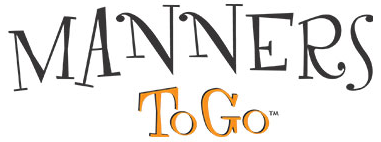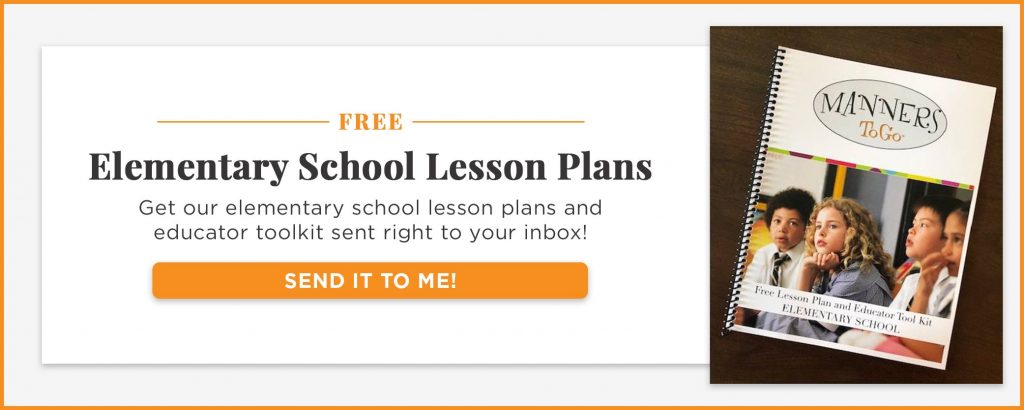It’s never too early to teach children good manners. Elementary school is actually the perfect time to start teaching social skills. Adding etiquette for kids to your curriculum will help your students develop into mature and respectful adults.
Social skills impact us for our entire lives. That’s why starting off with strong etiquette for kids is important. But why does it matter?
Why Is Etiquette for Kids Important?
Children are constantly learning and making connections. Childhood is a critical time to teach kids the skills they will need for the rest of their lives.
That doesn’t just mean reading, writing, and arithmetic!
Adding etiquette for kids into your classroom teaches your students skills that will help them on every step of their journey.
Those benefits will show up in your classroom, too! Well-mannered children are easier to teach and will have an easier time navigating social situations in the future.
We need social skills, like etiquette, to effectively navigate life.
Those skills let us form genuine human connections. Children, like adults, want to connect. They want to make friends and bring joy to the people around them. Learning manners gives them the skills to do that.
Good manners are all about self-respect. Teaching etiquette for kids is about teaching children to value themselves and recognize their effect on the people around them.
Areas of Etiquette For Kids to Teach to Elementary Students
Teaching etiquette for kids is easier than you think. Manners can be fun! In fact, you’re probably already encouraging children to use etiquette in your elementary school classroom.
I’m going to go over four specific areas you can focus on when teaching your elementary-aged kids. By starting with these easy areas (that you probably already cover!), you can shape the next generation.
These 4 areas are:
- Empathy
- Kindness
- Self-respect
- Respecting others
Empathy
Learning how to be empathetic to others is essential for people of all ages. Teach your students how to think about the world outside of themselves. Children should learn that every individual lives a life as rich and emotional as their own.
This can be as easy as asking them to notice when another student is not smiling or is feeling unwell. Your students will begin to naturally attune themselves to the people around them. It’s a skill that will help them build stronger connections with others for the rest of their life.
Ask your students to tell you how they help other people in the classroom. What examples can they give of times they practiced empathy?
Kindness
Everybody can use a little more kindness in their life. Kindness to others is a form of kindness to ourselves.
It’s also something that can be taught when demonstrating etiquette for kids.
You can encourage kindness in your students using these methods:
- Have your students practice giving one another complements. They can be about anything! Maybe someone has a really cool lunchbox or a beautiful smile.
- Actively include everyone in activities. Encourage your students to encourage their classmates.
- Incorporate gratitude in the classroom. Give your students an opportunity to share something they are grateful for every day.
Self-Respect
Self-respect is at the heart of etiquette for kids. Even as adults, we use good manners because of how it makes us feel inside.
Well-mannered people feel confident and respected. That sense of confidence and respect from others helps us to develop our sense of self-respect. Using good manners actually makes us feel good about ourselves.
Encouraging your students to use good manners will build their confidence. Having self-respect will improve children’s lives as they grow into mature, confident adults.
Respecting Others
When we respect others, we reap the benefits just as much as the people around us!
A child who is respectful of others is more likely to have a wider social circle. Other students will treat them better because they are being treated better. It’s reciprocal.
A child who respects others and respects themselves is easy to be around. This helps children create and maintain healthy relationships for the rest of their lives.
Where to Focus on Etiquette for Kids In An Elementary School Setting
I told you teaching etiquette for kids is easy, and it is! Here are some actionable ways you can utilize a manners curriculum.
In The Classroom
The classroom environment is a great place to teach children some basic etiquette skills. They have the opportunity to practice engaging in conversation with both their peers and your staff.
You can also encourage them to show gratitude. Whether it’s to other students, teachers, or the principal, there are many opportunities to practice giving thanks. Learning to write a proper thank you note will go a long way as they grow up!
You can also teach your students to give proper greetings and farewells. Say good morning when the day starts and goodbye in the afternoon. Practice good manners by making eye contact and smiling, rather than calling out as they run through the door.
In the Cafeteria
The cafeteria is another great place to implement etiquette activities. There are so many teachable moments around the table!
You can go way beyond the basics, but don’t forget to work on those, too! Students should start by learning to place napkins in their laps and chew with their mouths closed. From there, you can level up slowly!
Some easy ways to model etiquette for kids in the cafeteria include:
- Model good conversations with your students by asking them lots of questions about themselves.
- Encourage students to say please and thank you.
- Teach your students to make eye contact when apologizing. They’ll pick up on it if you model it for them.
- Encourage students to listen when others are talking and avoid interrupting.
- Plan lunchtime activities that don’t include devices so that students have an opportunity to focus on one another and talk.
Elementary school is the perfect time to start teaching etiquette for kids. You have so many opportunities to encourage your students to be respectful of one another and themselves.
If you’re not sure where to start, give my manners curriculum a try! You’ll be able to share the joy of manners in a way that the children really respond to.
Here is a FREE Guide to Help YOU Start a Business Teaching Manners to Children
CLICK THE IMAGE TO GET THE DOWNLOAD RIGHT NOW
Here Are Your Next Steps

Get to Know Manners To Go™
Most likely, you will want to get to know us. Feel free to call or email us. Click on the links below. We are happy to discuss the details with you.

Decide on the best training option for you
We offer two trainings to become certified to teach manners to children:

Option #1:
“Live” Video Training
If you are looking to start immediately and save money on travel and time, then this is your best option.You choose the dates of our trainings. Most choose to have their sessions once a week, others twice. This is a “live” and private training. It is NOT self-guided.

Option #2:
Two-Day In-Person
PRIVATE Training. That’s right, we meet in person, the two of us and our focus is completely on your business. Click the image above or follow the button below to learn more and to see a list of cities available for your training.

Receive the curriculum and book your training dates
Upon payment, you receive the curriculum. Next, we will send an email asking you to schedule your first training date.

Join the
Manners To Go™ movement with Lisa Richey.




